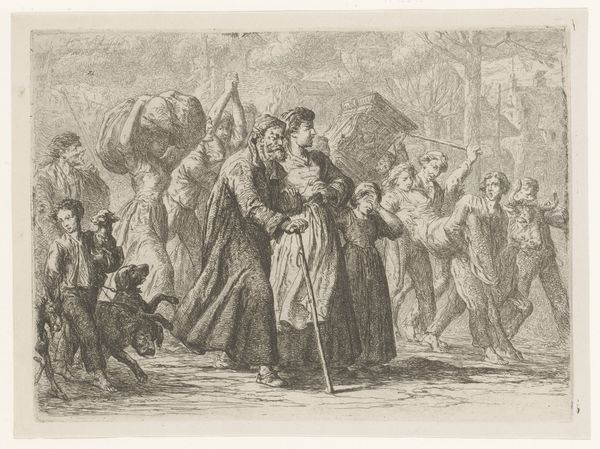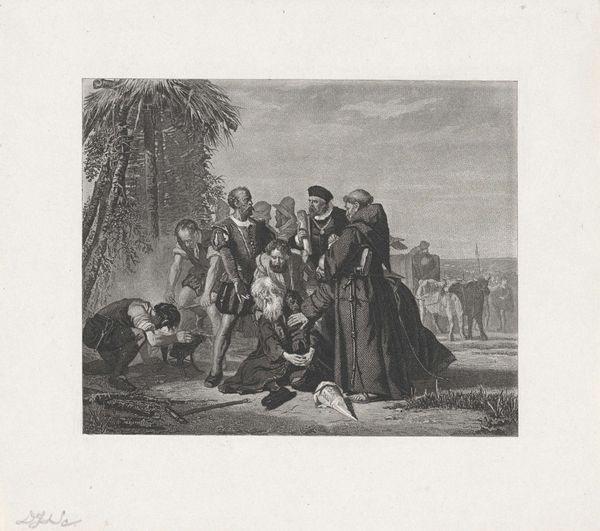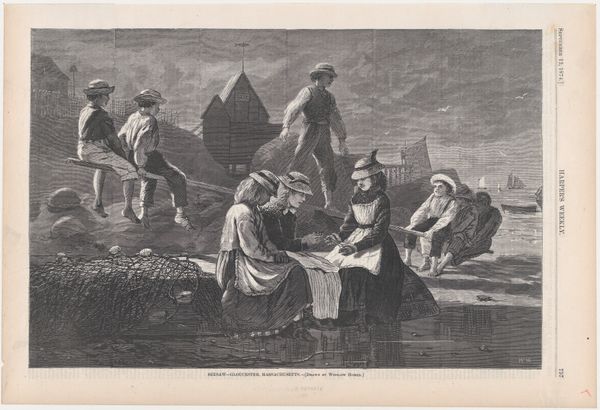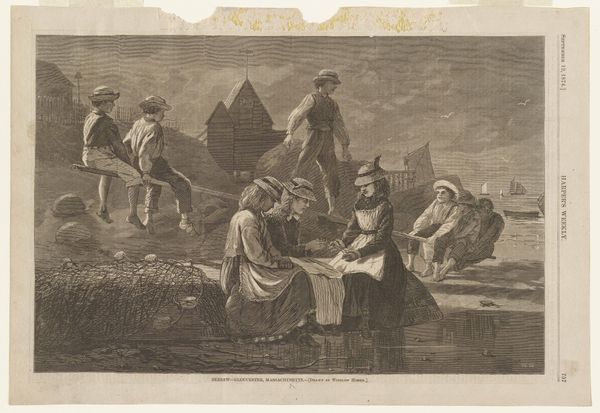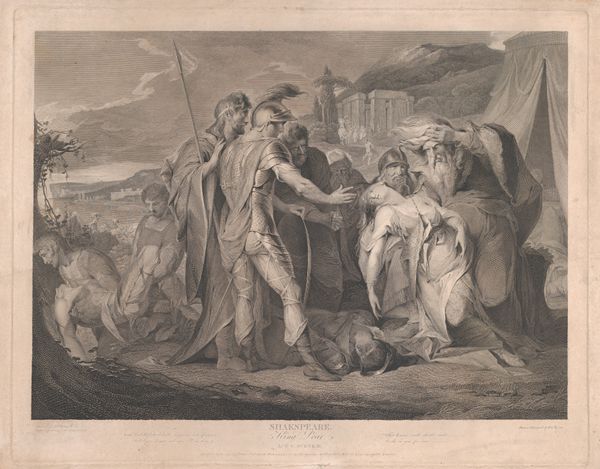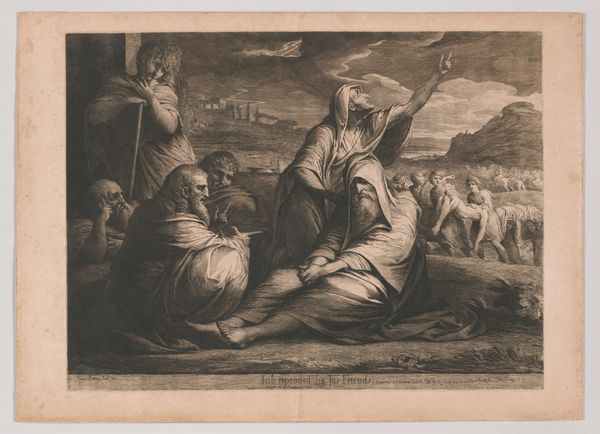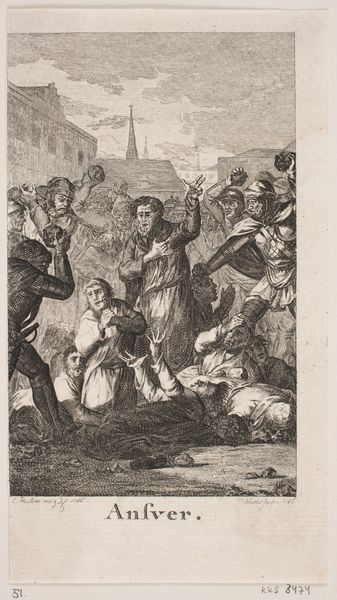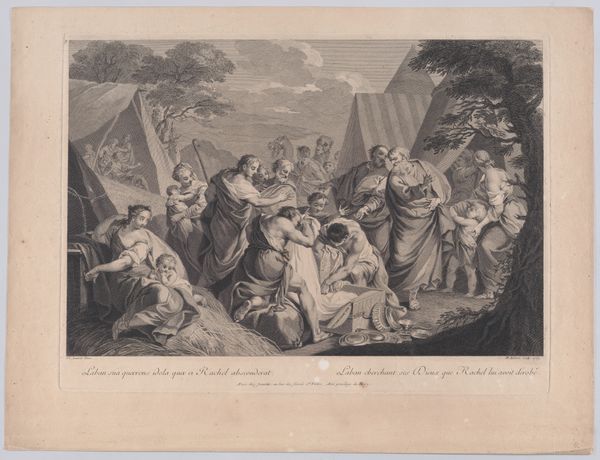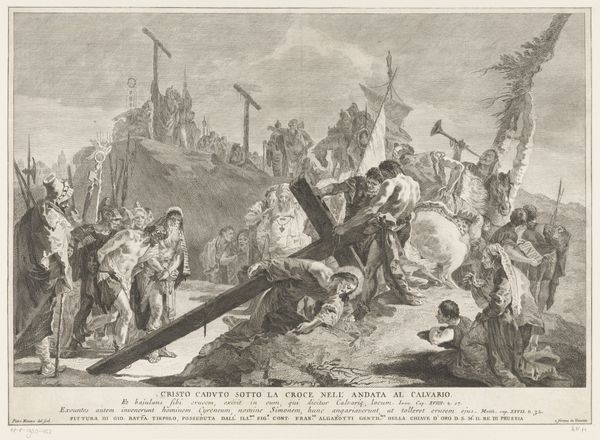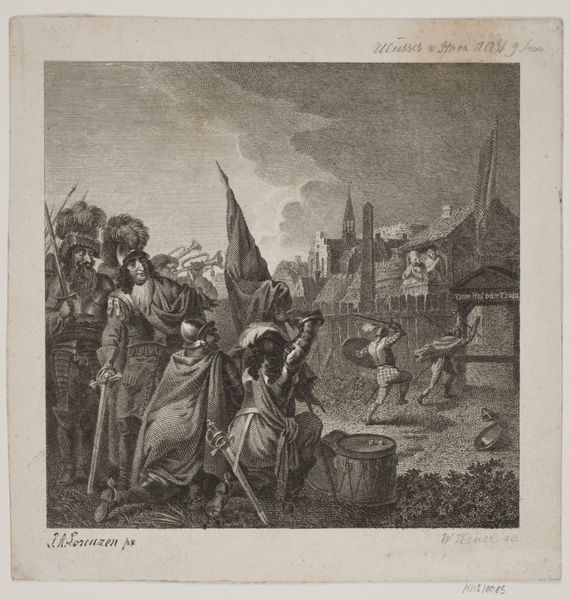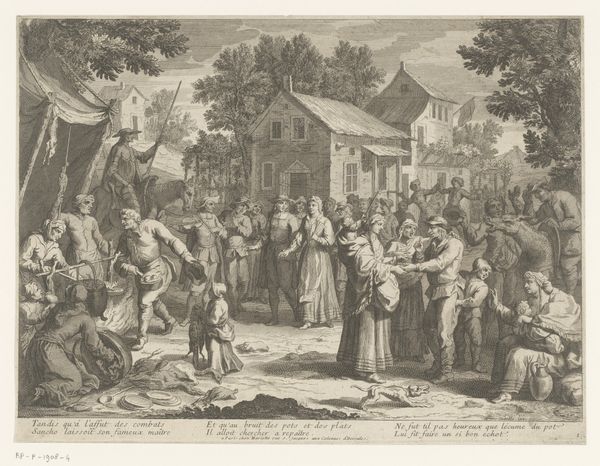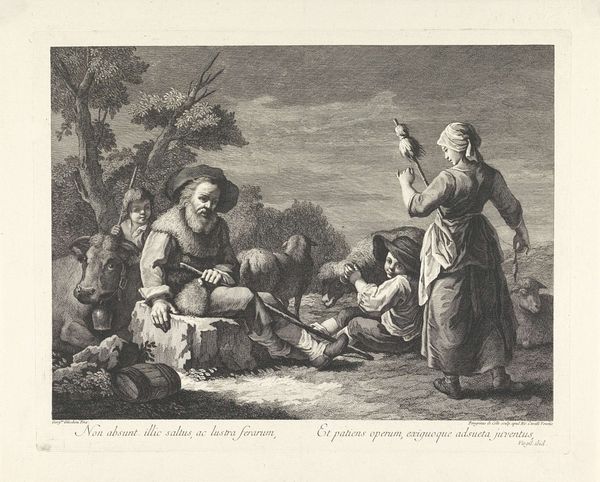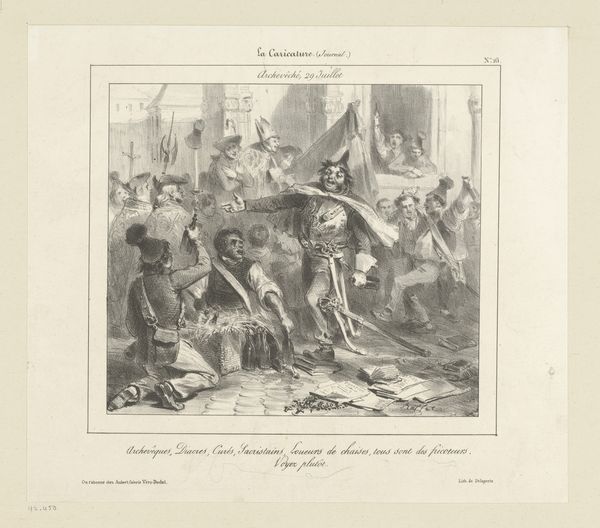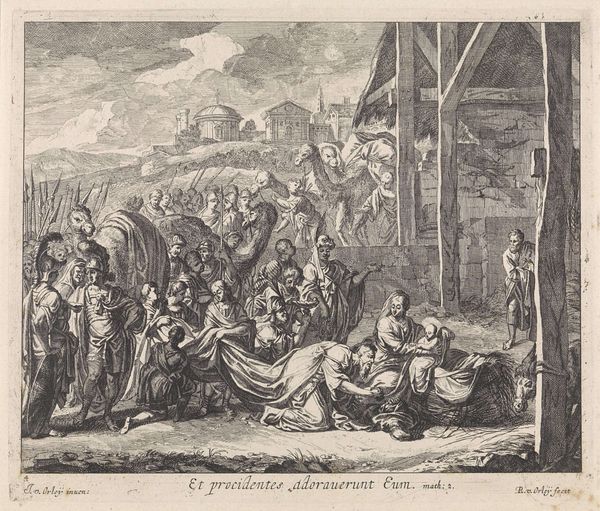
drawing, print
#
portrait
#
drawing
#
narrative-art
# print
#
romanticism
#
history-painting
Dimensions: Image: 10 1/4 × 13 9/16 in. (26.1 × 34.5 cm) Sheet (chine collé): 11 9/16 × 14 7/8 in. (29.3 × 37.8 cm) Sheet: 16 5/8 × 19 1/2 in. (42.2 × 49.5 cm)
Copyright: Public Domain
Curator: Eugène Delacroix's "Hamlet Contemplating Yorick’s Skull," a print from 1828, presents us with a pivotal scene steeped in theatricality and existential contemplation. Editor: Immediately, I'm struck by the overwhelming grayness. It’s as if Delacroix sucked the color right out of life to capture Hamlet's somber mood. Gives you that creeping "dust to dust" feeling. Curator: Observe how the stark contrast in tone underscores the thematic duality. The chiaroscuro technique not only models form but also functions as a visual metaphor for life and death. The structural weight falls heavily on Hamlet, yet the eye is continually drawn back to the grinning memento mori. Editor: He holds it with such delicacy, doesn't he? Like he's cradling a particularly fragile memory. You almost forget it's just a skull. What I find haunting is how close Horatio stands, like a shadow, a constant witness to Hamlet's descent. Curator: Indeed. Horatio functions as a vital formal element as well. His presence reinforces the psychological tension, drawing attention to Hamlet's introspective stance while subtly diverting gaze toward the background figures. The artist strategically deploys line and shadow to deepen this narrative. Note, too, how Delacroix flattens the perspective slightly to focus on this central trio. Editor: The graveyard’s really busy, isn’t it? A lot of looking going on... That open grave is like a black mouth—almost inviting you to contemplate your own end. It's a stark reminder that we're all headed that way. And it’s weird how calm the gravedigger looks, going about his grim work without a second thought. Curator: He acts, undeniably, as a signifier of acceptance and inevitability. It creates, rather dramatically, the necessary mise-en-scène. And Delacroix's formal decisions concerning spatial composition and the human figure reinforce its psychological weight. Editor: Ultimately, what this image conjures is a profound unease. It's a raw, unflinching look at our mortality, and in that vulnerability, it captures the very core of Hamlet’s plight. Curator: A potent distillation of tragedy, rendered through meticulous design.
Comments
No comments
Be the first to comment and join the conversation on the ultimate creative platform.
